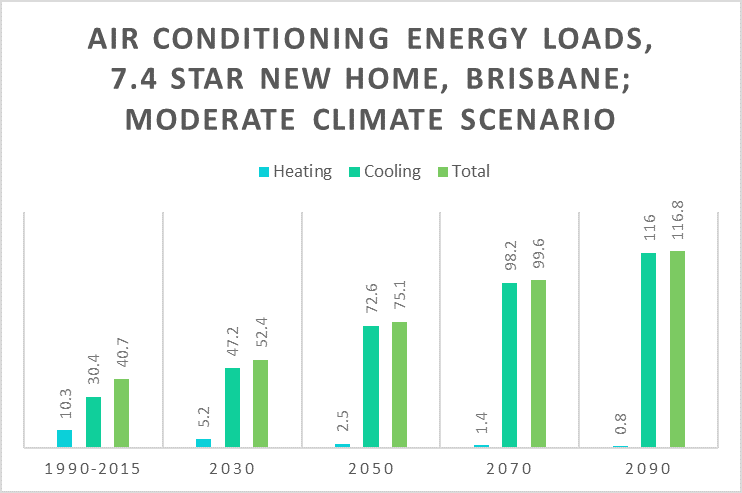Future-proofing Australia’s homes
Energy needed to cool homes is set to soar. A new report shows out of date climate data used for energy efficiency ratings will keep us sweating.
Sweltering Cities and Renew have published a report on the future climate impacts on our home energy efficiency regulations.
Australian building standards require homes to meet energy efficiency standards under the Nationwide House Energy Rating Scheme (NatHERS). The NatHERS ratings measure how much energy is needed to heat and cool homes in a range of climate zones, setting limits for heating and cooling loads to achieve star ratings. The climate zones are designed using existing weather data: until 2022 these were based on weather data from 1970-2005; from 2022 the data is from 1990-2015.
Unfortunately these data sets are already out of date, because temperature records continue to be broken. That means a seven-star home in 2024 will require more energy to keep cool in the near future, so energy efficiency ratings could drop considerably in the coming years.
The new research from Renew and Sweltering Cities uses CSIRO projected climate data to model indoor temperatures and energy use in homes from 2030 to 2090. Localised case studies of new and old homes were analysed in Brisbane, Cairns, Melbourne, and Adelaide.

Energy loads for cooling and heating in a new 7.4 Star, 3 bedroom house in Brisbane. Energy modelled using CSIRO future climate projections under a moderate (RCP4.5) climate change scenario. Figures in annual megajoules per square metre of floor space.
Emma Bacon, Founder and Executive Director of Sweltering Cities, said “Our energy efficiency ratings system uses out of date climate data that underestimates how hot it’s going to get in our homes in the future, and how much energy is required to cool them. It’s just not common sense to build a home for a climate that no longer exists.
“We can already measure the difference between the historical climate in the data we use in the National Construction Code and the climate we’re experiencing today. Homes that meet the current standard will have higher indoor temperatures and require more energy than predicted to keep them cool. The biggest difference will be seen in hot climates and older homes.
“You might think you’re set for the future if you’re building a seven star home, but that rating will go down over time as the actual climate moves further away from the current standard. We need to update the climate data in the National Construction Code to ensure people building today can rely on these regulations to have accurate information for the future.
“Living in a hot home is dangerous for people who are at risk of heat related disease. As our climate gets hotter and energy efficiency gets lower, even more people will be at risk at home, especially people who might struggle to afford cooling in the first place.
“When the National Health and Climate Strategy was launched by Assistant Minister for Health and Aged Care Ged Kearney in Dubai during last year’s COP, it clearly stated that updating the NCC to make homes safer should be a priority to reduce the health impacts of climate change.”
Rob McLeod, Policy and Advocacy Manager at Renew said ”A hotter climate will drive more energy use and put energy grids under increasing pressure at peak times. As we shift to renewable energy, we need to be able to make reliable predictions about the amount of power we’ll need.
“The Intergovernmental Panel on Climate Change, as well as our own plans to reduce carbon emissions, states that energy efficiency is going to be key to reaching our carbon emission reduction targets. Every home we build that uses out-of-date data undermines that.
“This is an issue of climate change mitigation and adaptation. Designing our homes well can reduce emissions and help to keep us safe from extreme temperatures at the same time. Using future climate data to calculate NatHERS ratings is important for making our homes resilient.
“Our research finds that the amount of energy needed to cool a home in Brisbane is set to double by 2050. A 7 star home built in Queensland today will score zero stars by 2090 under a severe climate change scenario.
“We found that without better energy efficiency, temperatures inside homes during summer could rise by 2-4 degrees this century. There’s a critical need to weatherproof homes as part of broader action to limit climate change.”
Read the report here.

